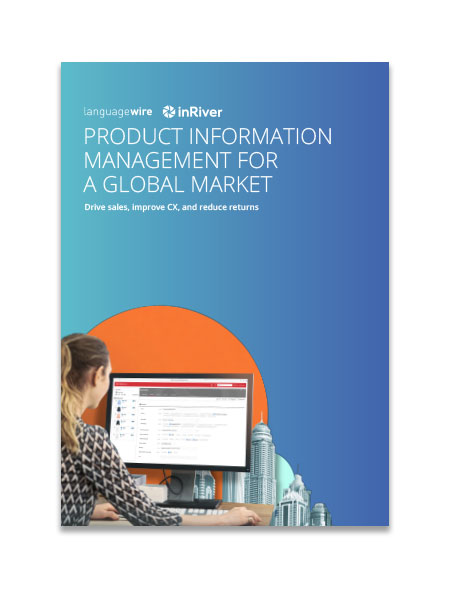
Author: Kimberly Stephens
Marketing Coordinator, LanguageWire
LinkedIn

Author: Kimberly Stephens
Marketing Coordinator, LanguageWire
LinkedIn

Successful Product Information Management
Brands are constantly competing for audience attention, bombarding us with information, attempting to capture our attention, to tempt us and ultimately to drive sales. Access to the Internet, advanced mobile technologies and the rise of online retail have changed how we research, compare and purchase products.
Brands that truly understand the complexities of the online consumer journey will better understand how to convert online window-shoppers into buyers. How? Through accurate, detailed and relevant product information, across every channel in the marketing mix.
Let’s consider that last big purchase you made. Where did you research the product? Most consumers use multiple channels to research products, such as official websites, YouTube reviews, product descriptions on online stores and even social media. Each channel has an immense impact on the consumer’s thoughts and feelings towards the brand and the product they are researching.
When you finally made that big purchase, where did you make the final transaction? Whether it was through an online shopping platform or in a high street store, you would have made that decision based on the confidence you had in the product information that you had gathered leading up to that moment.
If consumers are unable to find sufficient product information or notice inconsistencies in the information they gather, they are most likely to move to a different online platform or visit a physical store. To win the customer, you need to provide detailed descriptions and captivating product imagery across all channels.
Many people use the online store as a virtual shopping mall, researching and comparing products, but make the final purchase in-store – where they can test, inspect and handle the physical product. We have all done this, and it is something brands need to be aware of. To overcome this phenomenon, online retailers need to provide product information that brings the product to life, enticing the consumer to make an online purchase.
How do you bring your product to life? You must provide comprehensive product information, including product specifications and visuals to gain the trust and interest of the online consumer. To ensure consistency across all channels, leading brands are using a centralised Product Information Management (PIM) system as a central source to ensure consistency across all platforms, including third party retailers.
Today, consumers expect to find both basic and detailed product information, as well as contextual product content, all in their languages and local currency. This requires a key understanding of local markets and native languages.
To ensure that you break through the ever-growing clutter of the online marketplace, and ultimately convert the online window-shoppers into active buyers, you need to work with a network of global content experts and intuitive technologies that empower your brand to engage local audiences.
A successful eCommerce strategy depends on successful product information management. Detailed descriptions and captivating product imagery across all marketing channels that will convert online window-shoppers into active buyers. These product descriptions must be vivid and bring your product to life, enticing consumers to make the purchase online. Finally, the product information must be localised for global markets.
Download the white paper by LanguageWire and inRiver to find out more on how to drive revenue faster by automating product information and language workflows across departments, borders, suppliers and retailers.
Discover

Related content